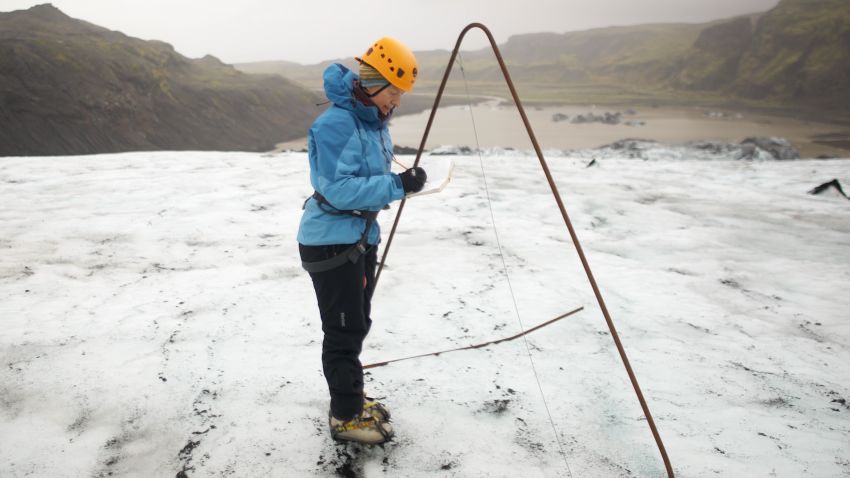Editor’s Note: John Palfrey is President of the John D. and Catherine T. MacArthur Foundation. The views expressed in this commentary are his own. View more opinion on CNN.
As president of the MacArthur Foundation and Theodore Roosevelt’s great-great grandson, I recognize Earth Day with a deep personal and professional commitment to a world in which the planet and all its people flourish.

As president of the United States, Roosevelt established 150 national forests and five national parks – and protected over 230 million acres of public land. At the foundation, I strive each day to foster an environment in which justice and peace prevail. These commitments hold great meaning for me as we collectively stare at a clock winding down on our opportunity to address climate change before it is too late.
Roosevelt and his peers, who helped to kick off the modern conservation movement more than a century ago, hold a tremendous and indisputable legacy in conserving the Earth’s precious natural gifts. The conservation mission they pursued is more urgent now than anybody at the time could have fathomed. Climate change has emerged as one of the greatest threats to human survival.
But Roosevelt, and many others in the conservation movement, did not do enough to protect the Earth with equity in mind. These White leaders failed to recognize the extraordinary role that Indigenous people played in protecting and nurturing our planet.
On this Earth Day, it is important to acknowledge where those who came before us have gotten it right and where they have come up short. We can at once be proud of the progress that’s been made and acknowledge where we need to do better, and fast.
Philanthropy and our nonprofit partners have accelerated a host of important changes over time, including on environmental issues. But we have not fully appreciated the ways in which our methods have at times stifled the momentum of people of color leading the movements we hope to help.
Historically, philanthropy has given less money to people of color-led organizations and placed less trust in their work. Our climate justice goals will remain out of reach as long as the top philanthropies continue to give just 1.3% of their US climate spending to Indigenous-, Black-, and Brown-led groups on the frontline of environmental justice, according to Donors of Color Network, an organization that strives for systemic change on issues that impact racial equity.
This is an important lesson as we in philanthropy step up our collaboration to slow the acceleration of climate change, which affects all of us – but not equally. The climate emergency is not happening evenly across the globe. For example, the climate impacts made worse by methane emissions are more likely to affect individuals and communities facing economic and nutritional insecurity; laborers and agriculture workers; the elderly and the sick.
Methane pollution poses an immediate danger to people who live near where it leaks, since it is almost always emitted alongside health-damaging air pollutants and is the primary contributor to ground-level ozone, which causes asthma and other illnesses.
According to a study from the Clean Air Task Force and the NAACP, more than 1 million Black people live within a half-mile of oil and methane gas wells, processing, transmission and storage facilities. The study also found that Black people are 75% more likely to live near industrial activity than the average American, leading to higher incidences of cancer and respiratory ailments. Black children have asthma at nearly double the rate of their White peers.
These disparities have persisted despite long-established philanthropic support of high-profile environmental organizations that have been focused on environmental justice since the movement took hold in the 1980s. The status quo lays bare a moral imperative, and an opportunity, for the philanthropic sector to take a new approach to dismantling the structures keeping climate justice elusive.
Climate justice means recognizing and addressing the fact that marginalized communities will feel – and have already felt – the worst impacts of climate change. We must make sure that those who face these effects are in positions of power, where they are able to make decisions for their own communities and to contribute to research and creative solutions. These goals require our sector to collaborate with and learn from Black, Brown, and Indigenous, leaders, which is inextricably linked to how we implement our grantmaking priorities.
Get our free weekly newsletter
And we should not stop at grantmaking – because the wealth we hold is powerful in other ways, too. We can work alongside one another to divest our endowments from fossil fuels and simultaneously ramp up investments in companies and funds committed to addressing climate change. There is plenty of room to scale up our impact.
As stewards of vast resources, we in the philanthropic sector have a responsibility to aim for the scale of impact in environmental protection akin to what my great-great grandfather and his peers achieved more than a century ago – and yet also have the chance to do so more equitably than we have in the past. My hope this Earth Day is that our north star will be to collectively expand climate solutions in ways that build power and further racial, economic and generational equity.


